Longines
The Longines Serbian (Serbo)
Longines
The Longines Serbian (Serbo)
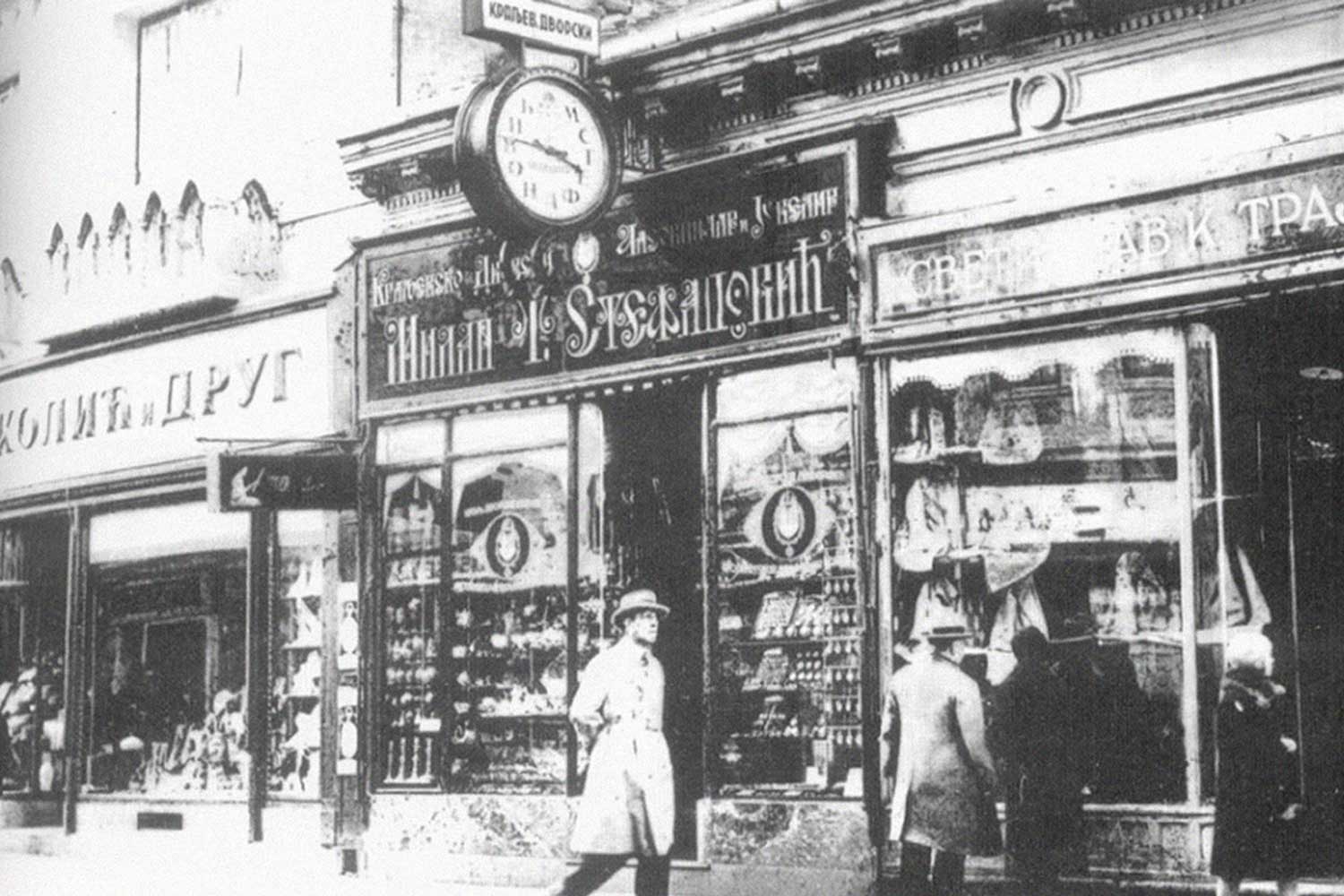
The flagship Mtilan T. Stefanovich store in Belgrade circa 1930
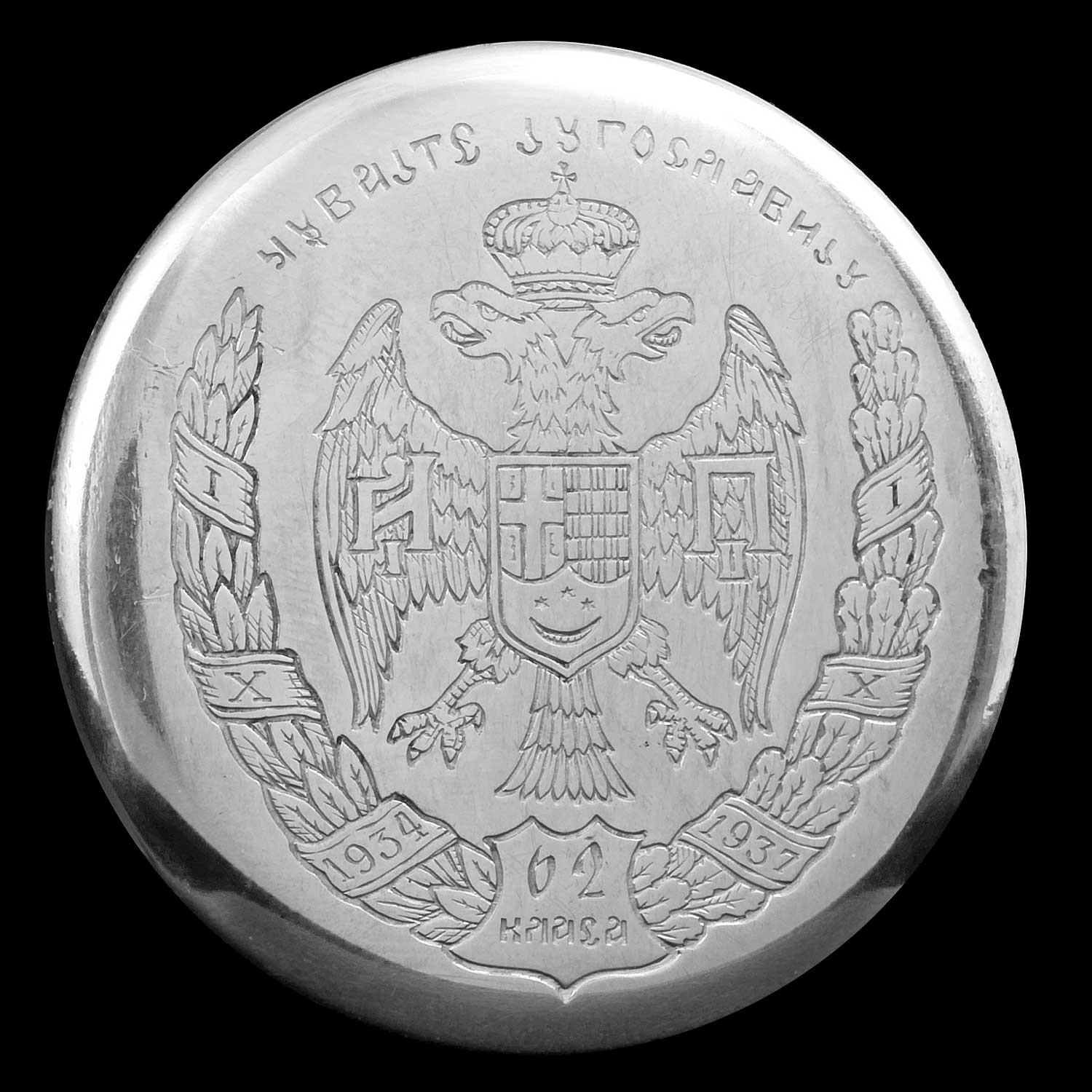
First- batch white dial caseback
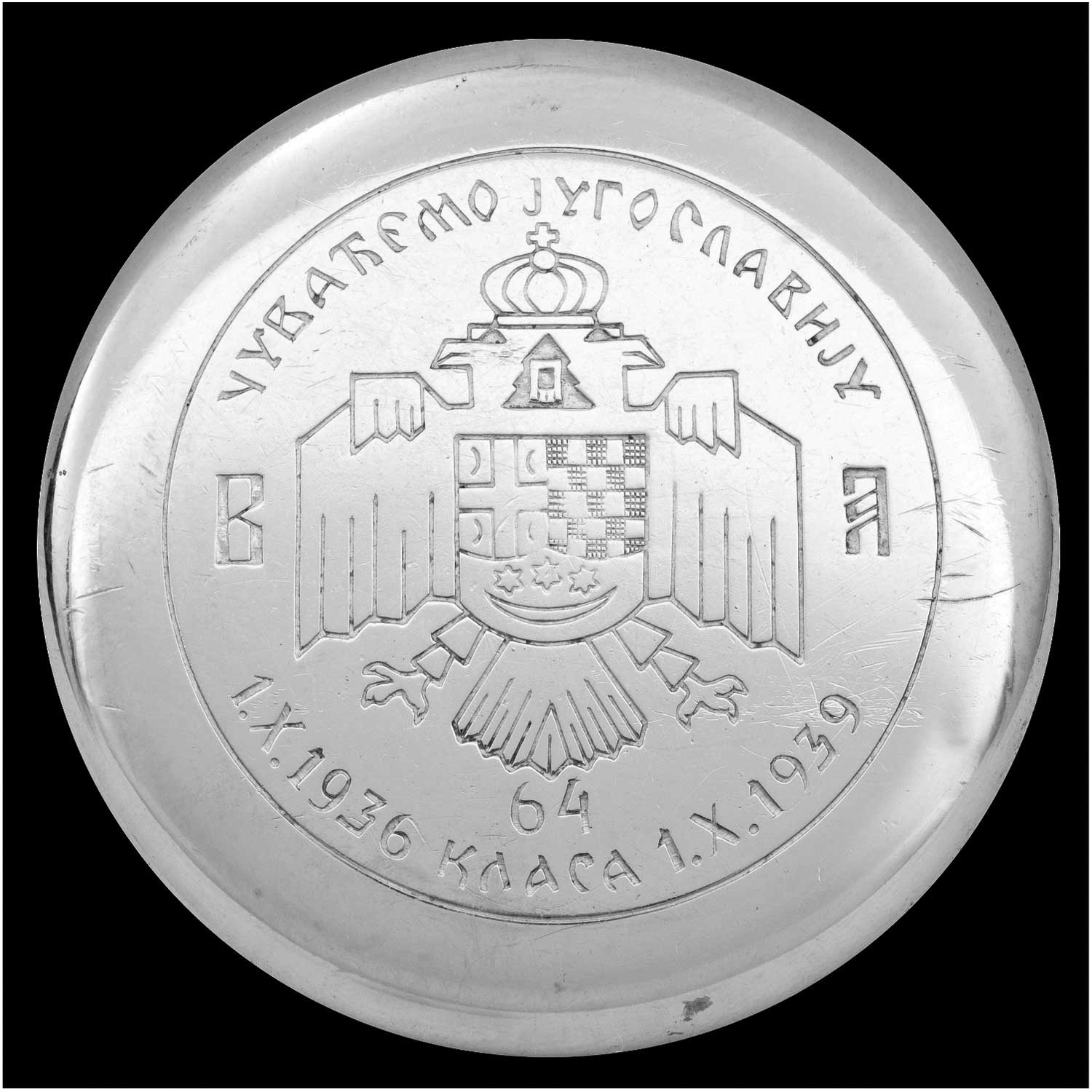
Second-batch caseback
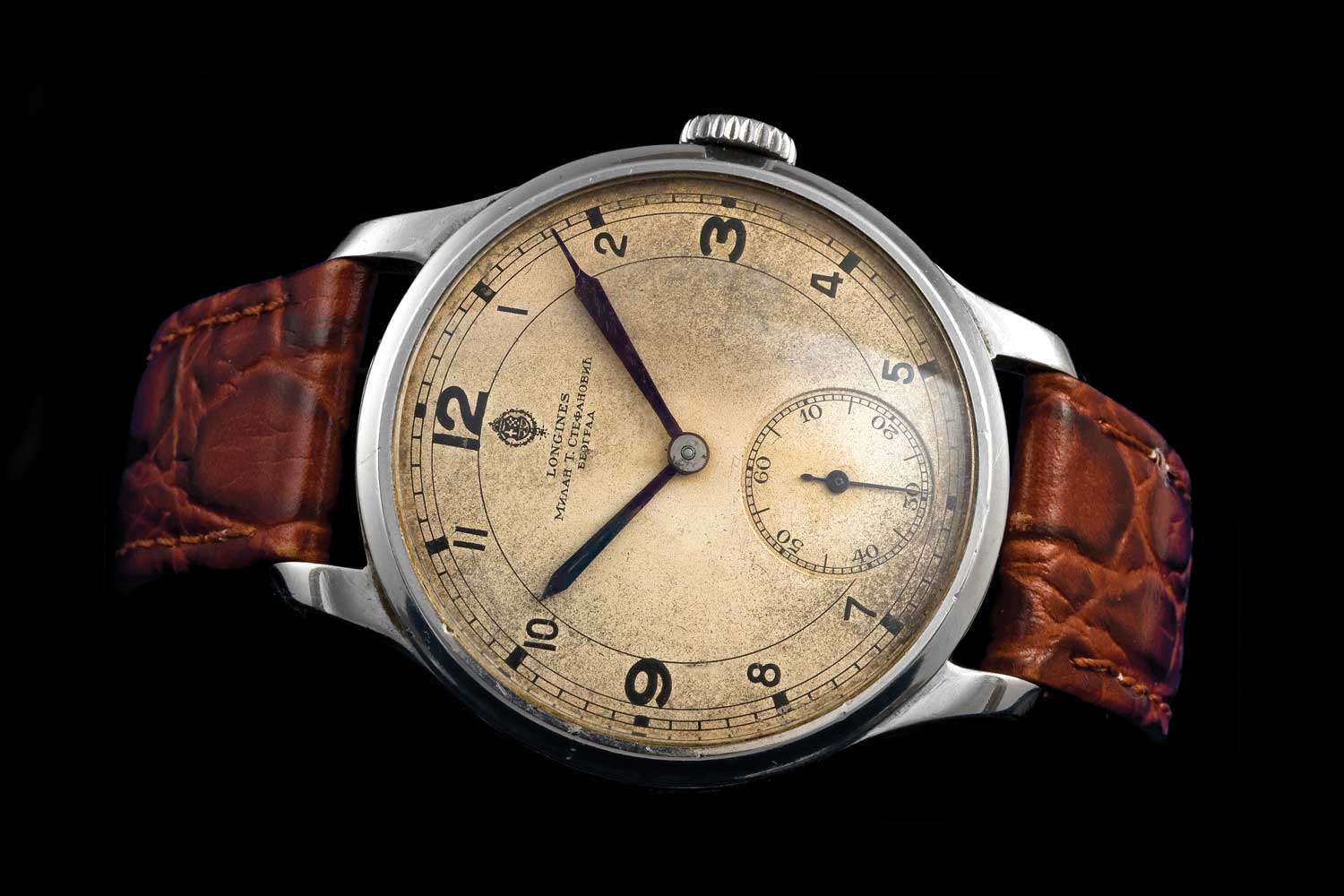
A first-batch Longines Serbian with white dial. Reference 3494, order number 19477, invoiced 11 September 1937 to Stefanovich. The hands are blued steel ‘Feuille’/leaf hands, the case is a great size at 38mm diameter
The later, second batch, black versions have the reference 2326. Longines’ archives states: “I can confirm the order number 20652. The name of Stefanovich and the emblem are on the black dial (in Cyrillic). There also is the engraving on the caseback of a ‘military coat of arms’. At the bottom, ‘class 64’.” As stated, the caseback has the symbol of Yugoslavia, a coat of arms first used by the Royal House of Karađorđević, which Serbia, along with Croatia and Slovenia, were part of during the period.
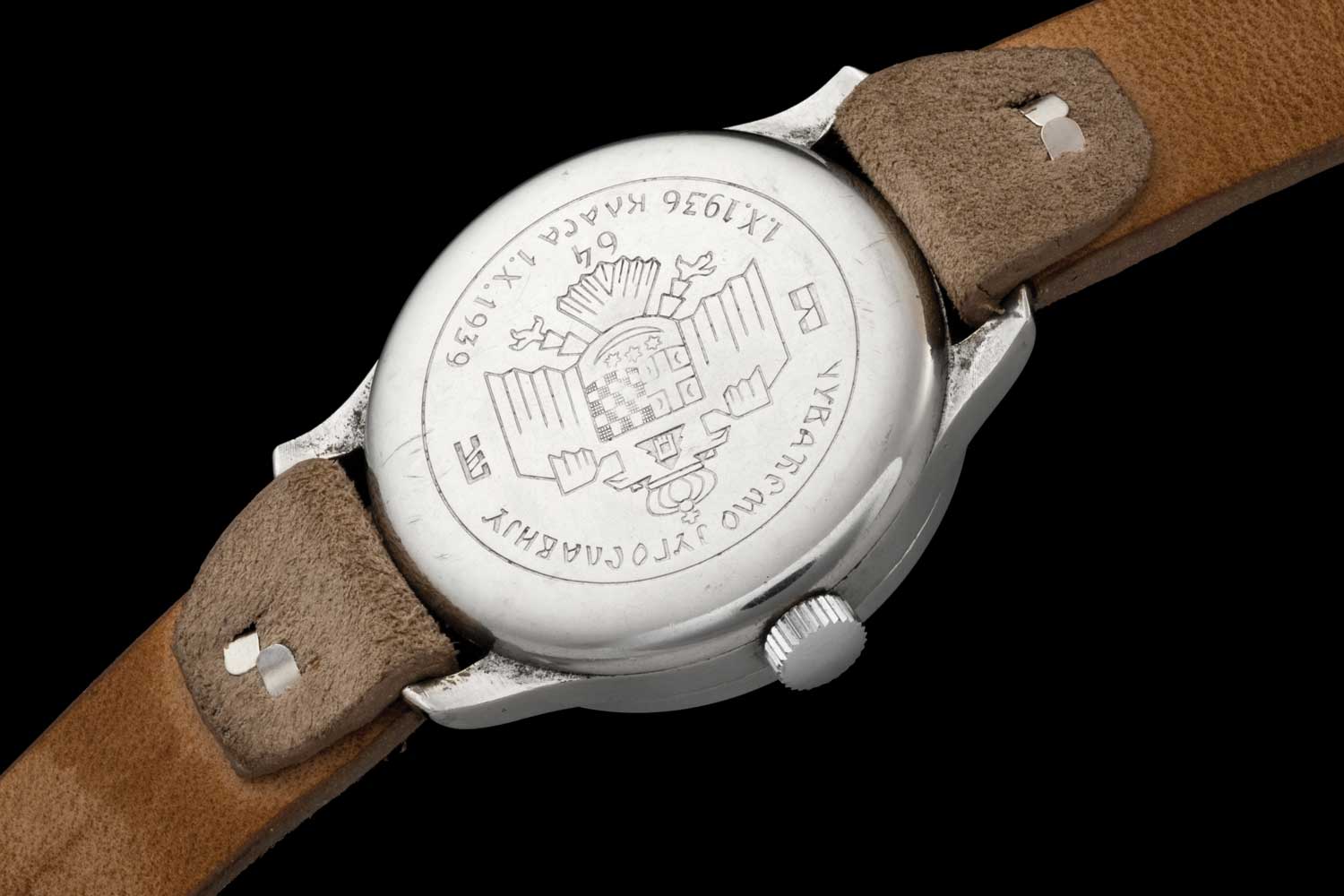
Second-batch black dial case back
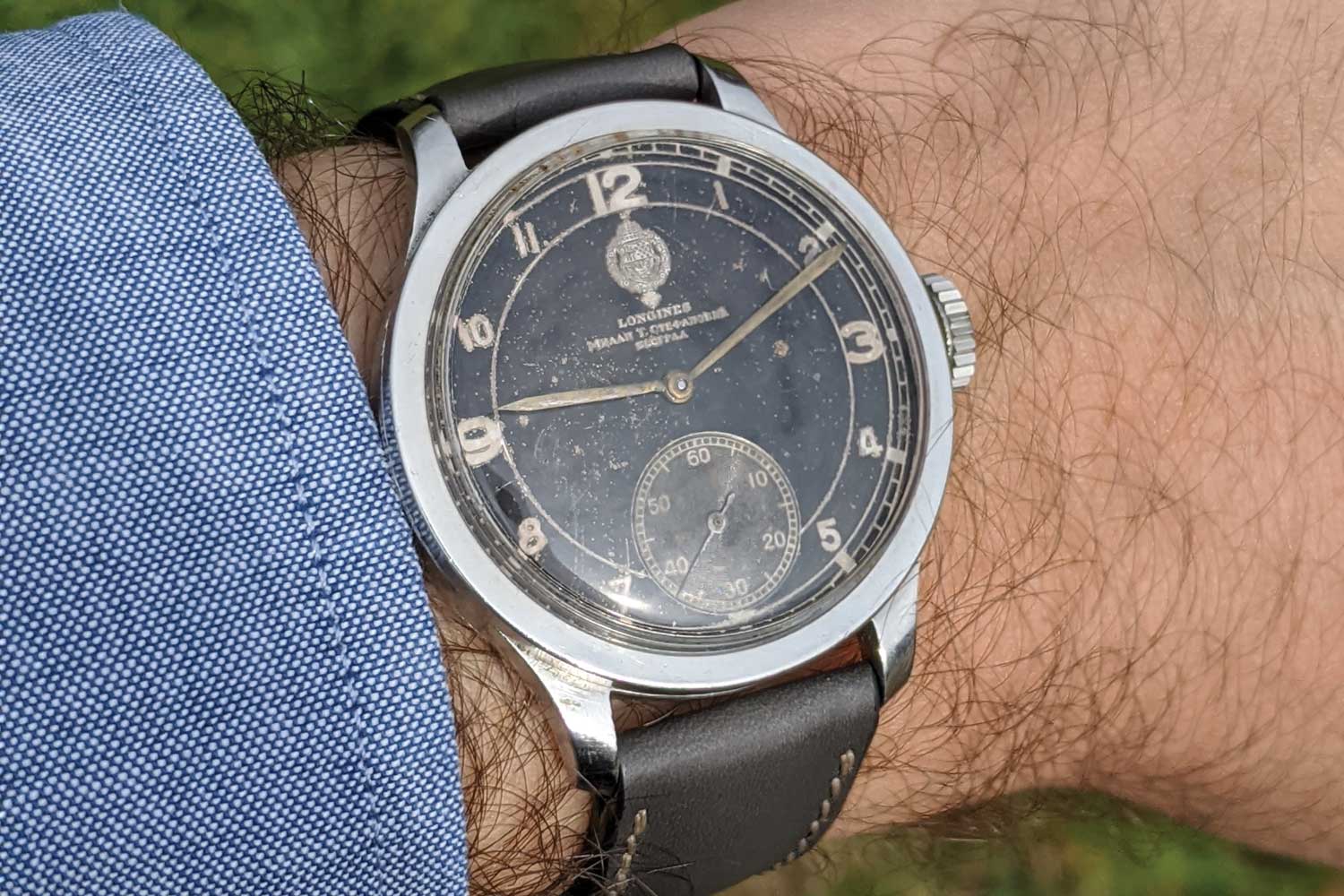
Reference 2326
Fast forward to 1939 and the arrival of World War II. Yugoslavia was surrounded by countries that had become allies with the Nazis. Prince Paul, who was temporary King Regent, decided to enter into a non-aggression pact with Germany. This did not bode well with the people of Serbia or the future King Peter II. As a result, there were riots and, eventually, a coup supported by the British. Following these events, King Peter II was proclaimed of age, and Prince Paul’s regency was ended. There was a deep sense of pride and national unity in Serbia at the time, but they were forced to surrender to the Nazis on April 17, 1941.
The dials
On the dial, the coat of arms, the Saint Lazarus emblem and retailer signature “Milan T. Stefanovich Beograd” are placed directly under the Longines font in Cyrillic, hence the nickname “The Serbian” or “Serbo”. Both the black and white dials were made by dial maker Flückiger & Fils for Longines. Both were located in Saint-Imier, and Flückiger & Fils was one of the most prominent dial makers along with Stern Frères in Geneva. The typography on both the white and black dials was also used in other time-only Longines pieces from the period.
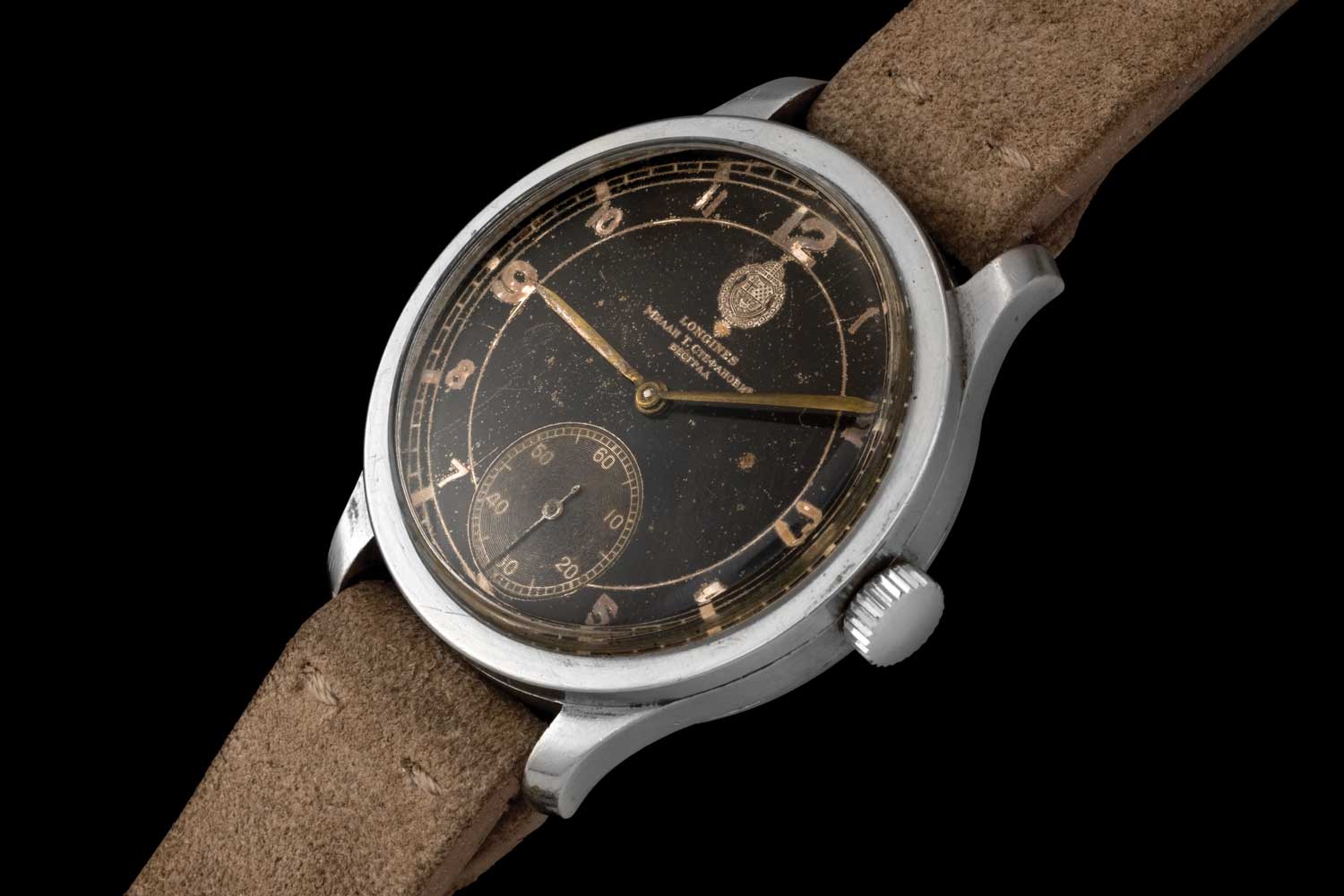
The coat of arms and Longines with retailer Milan T.Stefanovich Belgrade
The movement
The calibre 15.26 was first produced in 1911, it’s a 15½ ligne movement with a “hunter lever winding mechanism”, more or less it used the same ébauche as the calibres 15.25, 14.25, 17.26 and 21.25. Many have suggested that this was in order to retain the production costs and this was a goal regarding production of the movements in the early 20th century. But it should be emphasised that by 1937, these “old” calibres represented just 10 percent of production and were generally used mainly for special order watches, as the costs of finishing the movements were higher than that of making the new calibres. The 15.26 proved to be a sturdy calibre and, as a result, was used in other military Longines from the period, most notably the “Tartaruga” (ref. 3582). The movement proved reliable. It was gilt-finished, 34.7mm in diameter and 5.65mm in height, with a bi- metallic balance and steel Breguet overcoil.
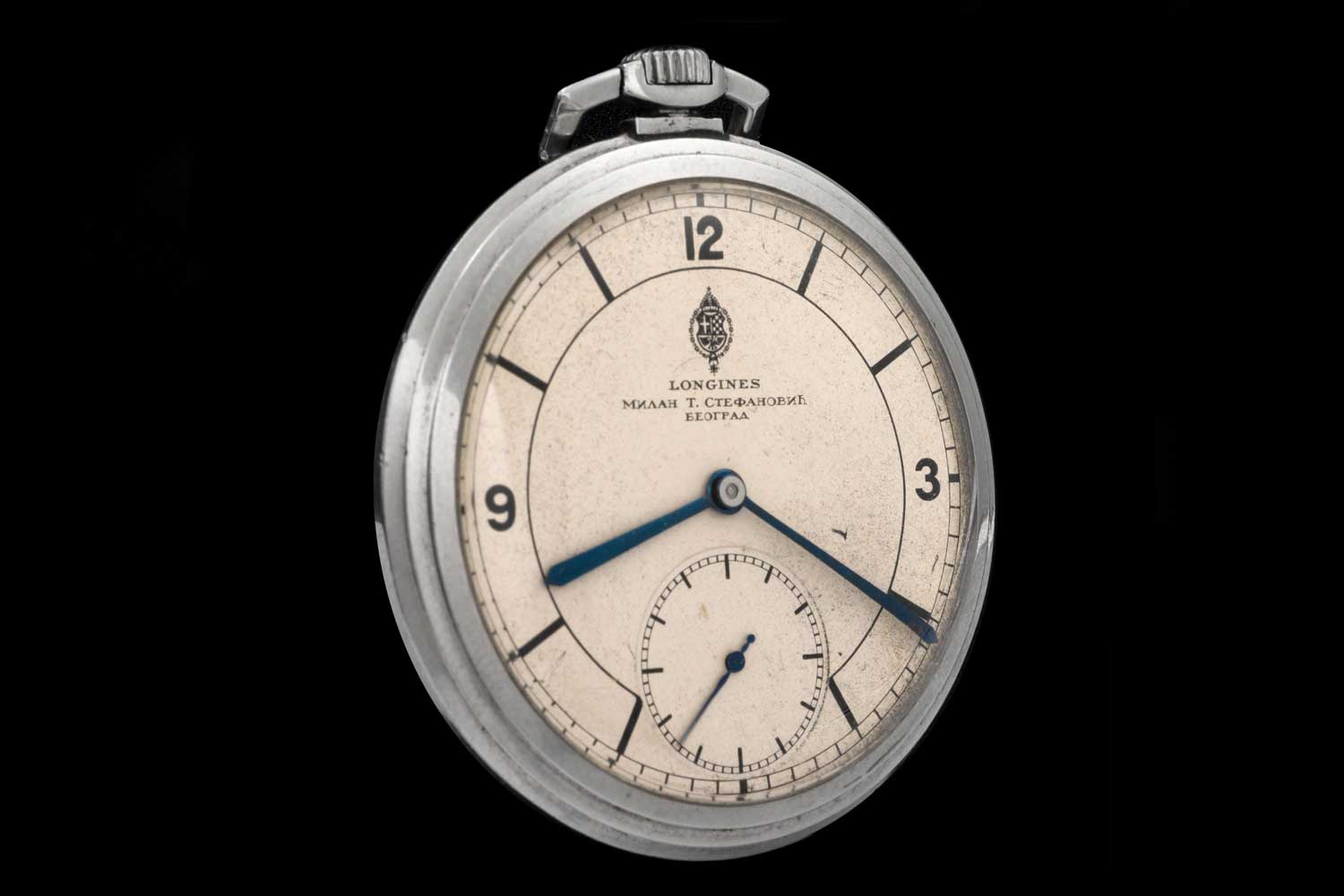
A nice pocket watch reference 3450 invoiced in April 1936
George’s find
I was lucky enough to find a wonderful example of a second batch watch with black galvanic dial, coat of arms on the dial and Yugoslavian crest on the caseback. The caseback engraving is very clear and shows no sign of previously being polished (often, the case with some of these watches is that the engraving would be faded or polished off completely). It didn’t have the correct crown when I found it, but I was very lucky to get one straight out of Longines’ drawers on a recent trip to Saint-Imier.
Here is the official information from the Longines archives on the watch: “The original serial number 5,778,665 identifies a wristwatch in stainless steel bearing the reference 2326 (this is also known as the cliché). It is fitted with a Longines manually wound mechanical movement, calibre 15.26, and was invoiced on 15 Sep 1939 to the company Stefanovich Milan T, which was at that time our agent in Belgrade. Also from the archives, I can confirm the order number 20652. The name of Stefanovich and the emblem are on the black dial (in Cyrillic). There also is the engraving on the caseback of a ‘military coat of arms’.”
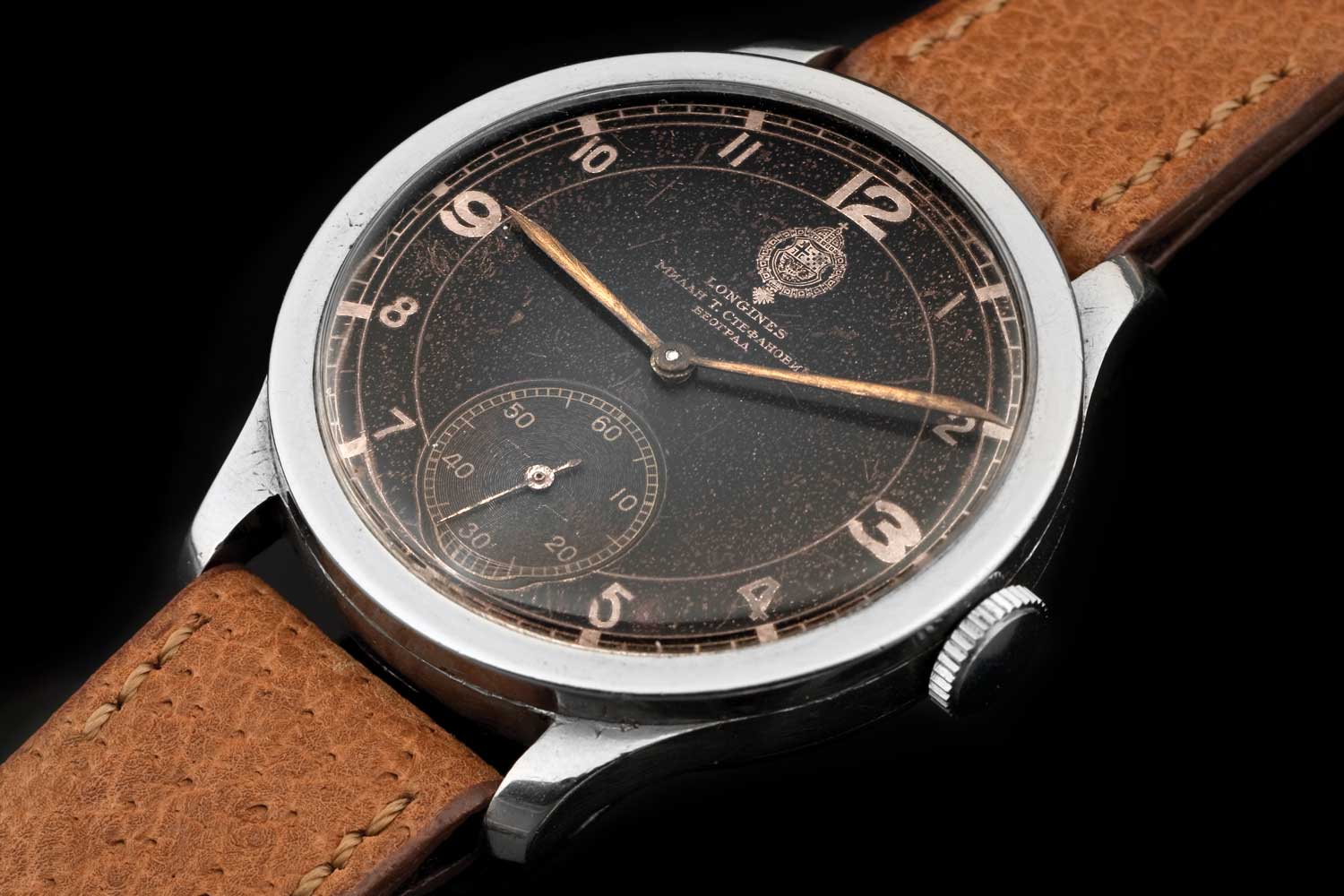
Reference 2326
Credits and thanks
I would like to thank all of my friends who have helped me with the research for this watch especially:
• Jennifer Bochud, friend and Longines Museum curator;
• Srdjan, friend and top collector and authority on Stefanovich watches based in Belgrade;
• Oliver Hartmann, friend and great collector of Stefanovich watches, based in Colonge Germany;
• Big thanks to my dear friend Roberto Randazzo supplying the majority of the images.










